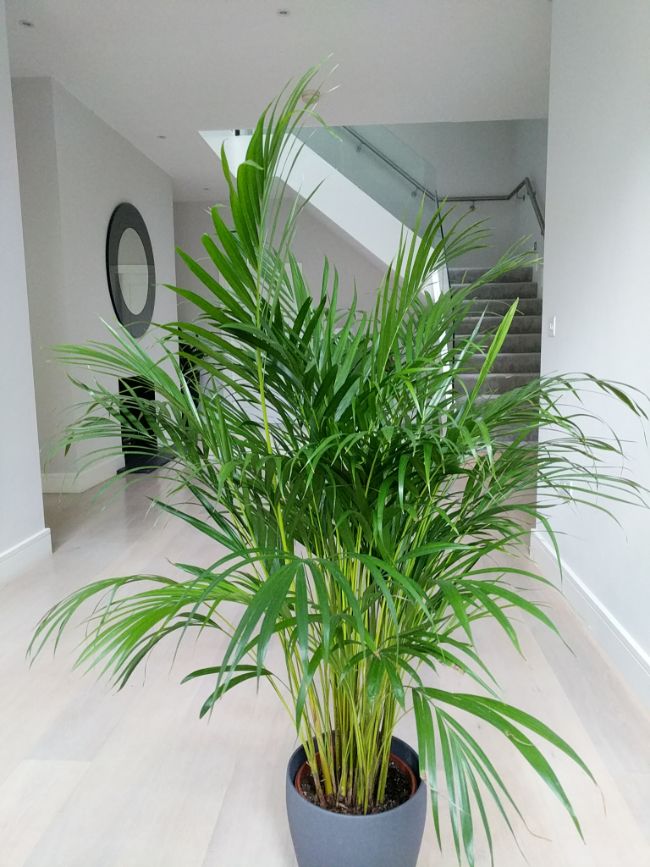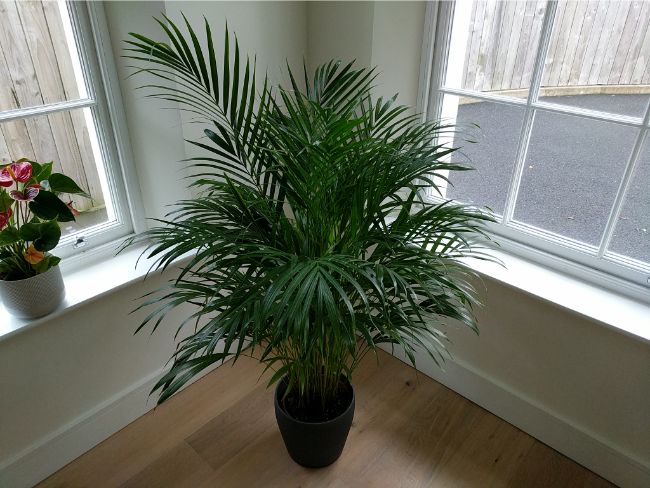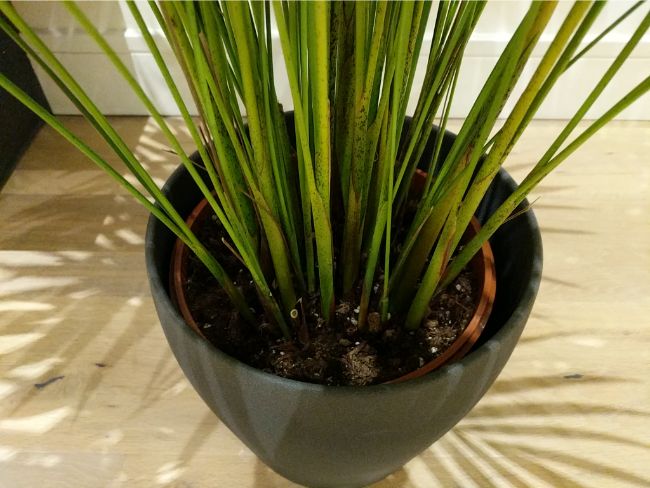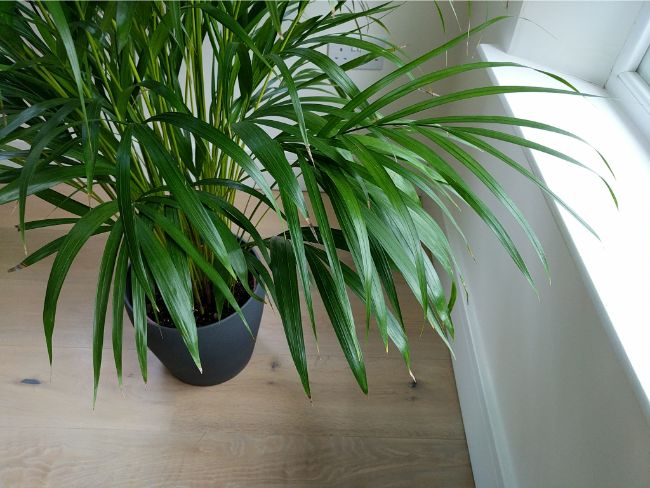The Areca Palm (Dypsis lutescens) is a wonderful choice of indoor palm tree, but it does tend to be prone to getting brown tips on the leaves. The good news is that identifying the cause is quite simple, allowing you to fix the problem and prevent your Areca Palm getting brown tips in the future.
Why does my Areca Palm have brown tips and leaves? Areca Palm tips and leaves turn brown due to overwatering, underwatering, insufficient light, overfertilizing, low humidity, fluoridated or chlorinated water, pests or unnecessary repotting. Identifying the cause is essential to help you fix the problem.
Read on and I’ll explain exactly how to identify why your Areca Palm has brown tips and leaves and explain the steps to fix your plant to have it thriving and looking beautiful once more.
If you’d like to learn how to avoid brown tips on all your houseplants, and grow beautiful plants that thrive year after year, check out my book, “Houseplants Made Easy”.
8 Main Causes For Your Areca Palm Getting Brown Tips And Leaves
The most important thing to identify why your Areca Palm is getting brown leaves is to observe your plant closely. Every aspect of your plant, as well as the growing conditions will give you clues to the underlying problem. Once you know what to look for, identifying the problem will be easy.
Overwatering
Areca Palms are not very forgiving of being overwatered. If your Areca Palm is left to sit in waterlogged soil for long, root rot will set in. This leads to the plant being unable to absorb the water and nutrients that it needs from the soil, and you will see brown tips, leading to brown leaves, and eventually browning of the entire plant.
It is essential to plant an Areca Palm in well draining soil. I use a peat based potting mix with added perlite to increase drainage. Use a pot that is large enough to prevent the pot from tipping over, but not sufficiently large that it takes a long time for the potting soil to dry out. Thirdly, it is essential to plant an Areca Palm in a pot with plenty of drainage holes.
Aim to water your Areca palm once the top of the soil feels dry and the first 1-2 inches of soil are barely damp. If you are struggling to assess whether your Areca Palm needs water, read my article all about how to assess when to water indoor plants. If you want to make things a little easier, you can use a moisture meter to measure how damp the soil is. You should water your Areca Palm once the soil is about half way dried out, or your moisture meter is reading medium.
Bear in mind that the amount of light and heat that your Areca Palm is exposed to will dictate how long the potting medium takes to dry out. I alway water my Areca Palm thoroughly every time I water it, to prevent fertilizer salt build up.
Although growing conditions will vary for every plant, I always feel that if the soil takes about a week to dry out sufficiently between waterings, then this is about perfect for an Areca Palm
If the potting soil of your Areca Palm is taking many weeks to dry out, consider whether you have a problem with drainage, size or type of pot, or whether there is insufficient light, heat or ventilation.

Underwatering
The other side of the watering coin that can cause brown tips and leaves on your Areca Palm is underwatering. Areca Palms like fairly moist, but not waterlogged soil most of the time, and once the soil dries out, they will start to show signs of stress.
The plant will decide that it can’t maintain all of it’s leaves and leaflets, and sacrifice some of them, resulting in brown and dying leaves. Something no one caring for an Areca Palm wants to see.
The best way to avoid underwatering your Areca Palm is to have a regular regime of inspecting your houseplants. I walk round my house every few days, inspecting my plants to see if there are signs of stress.
Look closely at the leaves and feel the soil to determine whether your Areca Palm needs watered and forget about just using a watering schedule, as the watering needs of your plant will vary depending on the temperature, light and season.
Insufficient Light
Areca Palms need bright light to grow and thrive well. They are a medium light plant that grows beneath the canopy of larger trees in nature. For this reason, they like bright, but not direct sunlight.
Direct sunlight can cause burning of the leaves, but it tends to be insufficient light that causes more problems. Low light conditions result in the plant not being able to sustain as much greenery, which results in brown tips and brown leaves on your Areca Palm as some of the leaves die back.
The best way to assess whether your plant is getting sufficient light is to observe your plant over time. If you notice that the room you have your Areca Palm in is particularly gloomy, you will need to move it to a brighter location.
An Areca palm will usually do best near an east or west facing window. A little direct sunshine in early morning or late afternoon is fine. In a south facing room, ensure your Areca Palm is placed well away from the window. In a north facing room, get your Areca Palm as close as possible to the window to maximize the available light.

Overfertilizing Causes Brown Tips On Areca Palms
Areca Palms will benefit greatly from a little fertilizer, but it’s very easy to overdo it. Applying fertilizer too often or in too concentrated a form can cause symptoms of fertilizer burn, including brown tips on your Areca Palm.
I recommend fertilizing Areca Palms every two months during the growing season with balanced, water-soluble fertilizer, made up at half the concentration recommended on the instructions. I use this balanced fertilizer, which has served me really well over the last few years.
Over time, fertilizer salts can build up in the potting soil, which can lead to the same problem, even though you may be applying the fertilizer correctly. To prevent this, I always water my Areca Palm thoroughly, letting water run through the potting media and out of the drainage holes.
Every few months, I flush the soil out more thoroughly, as this rinses excess fertilizer salts right out of the potting media and prevents this becoming an issue which can cause brown tips on your Areca Palm. I take mine to the sink and let water run through it for 2-3 minutes to ensure this problem is minimized.
Low Humidity
In low humidity conditions, your Areca Palm will lose water from the foliage through transpiration more rapidly than is ideal. Areca Palms are used to growing in warm and humid conditions, and low humidity will lead to brown tips on the leaves, and if left untreated, to generalized browning of the leaflets.
Areca Palms are more forgiving than some indoor palms when it comes to humidity, but you should still aim to keep humidity above 40% to prevent brown tips.
Humidity can be increased by using a humidity tray or grouping your houseplants, but using a humidifier tends to be much more effective. Misting your Areca Palm is largely useless, as this only provides a very short-lived increase in localized humidity.
I used to have quite a small humidifier but found that it needed to be refilled very often. I switched to this humidifier (link to Amazon) a while ago, and it is so much more effective, and only needs refilled every few days.
I’ve written an entire article that discusses 10 of the best ways to increase indoor humidity for your houseplants with minimal effort.
Fluoridated Or Chlorinated Water
Indoors palms are generally quite sensitive to the type of water used on them. Many water treatment facilities add chlorine to tap water to ensure that it is safe to drink. While perfectly safe for human consumption, some plants can be sensitive to chlorine, and one of the symptoms of this is brown tips on your Areca Palm.
If you are doing everything else right for your Areca Palm and it is still getting brown tips, you should definitely try watering your plant with chlorine free water. You can use rainwater or filtered water or, alternatively, if you leave tap water sitting for 24 hours, exposed to sunlight, the chlorine will react with the water, eliminating it almost entirely.
Fluoride in water causes a similar problem with Areca Palm leaf tips, but not all tap water will have significant quantities of fluoride present. This often enters the water supply due to the underlying rock formations that your water supply comes from, but some water authorities add supplemental fluoride to water as a public health measure due to the dental health benefits.
You can usually contact your water supplier or check their website and get a copy of the latest water quality report, which will tell you exactly what concentrations of a whole range of minerals and chemicals are present in your water.
Interestingly, if you plant your Areca Palm in slightly acidic soil, pH 6.0 to 6.5, then this will prevent the fluoride from being available for absorption by your plant, and your Areca Palm will generally do better in slightly acidic soil anyway.
Pests
Areca Palms are prone to mealybugs, scale and spider mites. All of these bugs will feed on the stems and foliage, causing damage to the plant, resulting in brown tips and leaves on your Areca Palm.
Whenever you identify brown leaves or tips, it is important to check your plant carefully for any sign of pests. Don’t forget to check both sides of the leaves and the stems too.
If you do find bugs, you should treat this without delay. I’ve written about some of the best ways to get rid of houseplant bugs naturally, so you may not have to resort to chemical pest control.
Unnecessary Repotting
Areca Palms don’t need to be repotted very often. Once every five years is fine for most growing conditions. Every time you repot, you will inevitably damage some of the roots and disrupt the ability of the plant to effectively absorb water and nutrients. As you know by now, the response to this will be to see your Areca Palm getting brown tips and leaves.

Treating Your Areca Palm with Brown Tips And Leaves
The most important thing to focus on is to identify the cause and correct the problem with the care of the plant. If you are able to provide good growing conditions, your Areca Palm will produce plenty of new leaves, and this will greatly improve the aesthetics of your plant.
Generally it will not harm your Areca Palm to remove brown leaves or cut off affected leaflets. If the majority of the leaf has turned brown, I cut it off at the base, near the soil, with a pair of sharp and clean pruners.
If it is just the leaf tips that have turned brown, you have two choices.
- Option one is to leave the brown tips alone. It is quite common for Areca Palms to develop a few brown leaf tips and, if you have an otherwise healthy plant, then this shouldn’t detract from the look of your plant.
- Option two is to artistically cut the brown leaf tips off in a point, so that from a distance, it looks like a normal, but slightly shorter leaflet. Just make a small diagonal cut on each side of the leaflet, coming to a point. It is better to cut off the majority of the brown, but not quite cut into the green healthy part of the leaf, as this can lead to a further brown margin developing.
Don’t Give Up On Your Areca Palm With Brown Tips – They Are Worth The Extra Effort
Areca Palms are ideal larger houseplants that can look stunning in your home, but they do require a little more effort than some plants to keep them in top condition.
I’ve written a more general Areca Palm care guide, which you can read to get all the details of how to keep your Areca Palm in good health right from the start.
Alternatively, take a look at some of my related articles which you may find helpful after reading this one.

